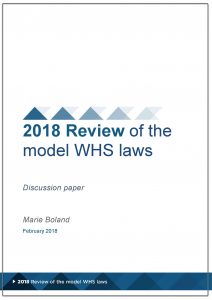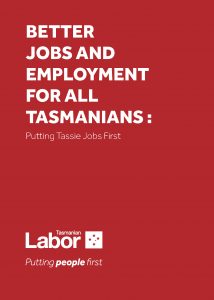 In 19 February 2018, Safe Work Australia (SWA) “launched” the independent review of Australia’s Work Health and Safety laws under former Executive Director of SafeWorkSA, Marie Boland. SWA has released a 49-page discussion paper, a summary and a list of questions. Below is an initial response to some of those questions.
In 19 February 2018, Safe Work Australia (SWA) “launched” the independent review of Australia’s Work Health and Safety laws under former Executive Director of SafeWorkSA, Marie Boland. SWA has released a 49-page discussion paper, a summary and a list of questions. Below is an initial response to some of those questions.
What are your views on the effectiveness of the three-tiered approach – model WHS Act supported by model WHS Regulations and model WHS Codes – to achieve the object of the model WHS laws?
The structure works well, when business owners know of the relevant documents.



 At Australia’s
At Australia’s  Industrial manslaughter laws passed through the Queensland Parliament on October 12 2017. The debate about the laws on that day is an interesting read as it illustrates some of the thoughts about workplace safety in the minds of policy decision makers, business owners, industry associations, trade unions and safety advocates.
Industrial manslaughter laws passed through the Queensland Parliament on October 12 2017. The debate about the laws on that day is an interesting read as it illustrates some of the thoughts about workplace safety in the minds of policy decision makers, business owners, industry associations, trade unions and safety advocates. monwealth. Legislative change has a smooth journey when political stars are aligned, where the same political party is in power at State and Federal levels. Federal change is even smoother when the same political party has control of both houses of Parliament. Not surprisingly, this ultimate combination is rare and could be as damaging to occupational health and safety (OHS) as it can be beneficial. The recent OHS harmonisation process is a good example of a political mess.
monwealth. Legislative change has a smooth journey when political stars are aligned, where the same political party is in power at State and Federal levels. Federal change is even smoother when the same political party has control of both houses of Parliament. Not surprisingly, this ultimate combination is rare and could be as damaging to occupational health and safety (OHS) as it can be beneficial. The recent OHS harmonisation process is a good example of a political mess.